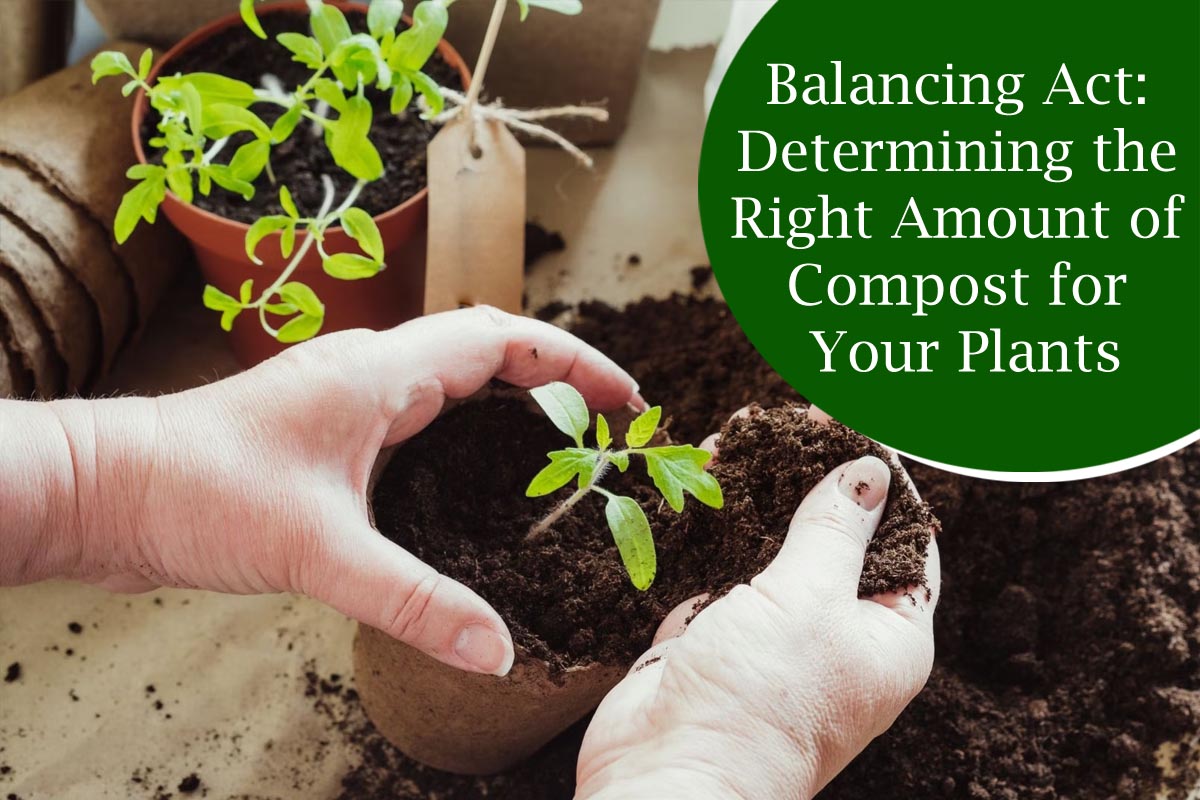
Balancing Act: Determining the Right Amount of Compost for Your Plants
Compost is a gardener’s secret weapon, enriching soil and fostering vibrant plant growth. However, achieving the perfect balance in compost application is crucial for optimal results. In this blog, we’ll embark on a gardening journey to explore the art of determining the right amount of compost for your plants—an actual balancing act that can transform your garden into a thriving oasis.
Determining the Right Amount of Compost for Your Plants
- Understanding Your Soil
- Start Small and Monitor
- Compost as a Soil Amendment
- Avoid Over-Amending
- Customize for Containers
- Seasonal Adjustments
Understanding Your Soil
Before diving into compost application, assess your soil type. Sandy soils benefit from increased water retention provided by compost, while clay soils benefit from improved drainage. Knowing your soil’s composition sets the stage for a tailored composting strategy.
Also Read This : Signs Your Compost is Ready to Transform Your Garden
Consider Plant Requirements
Different plants have distinct nutrient needs. Leafy greens may thrive with a nitrogen-rich compost while flowering plants could benefit from additional phosphorus. Research the nutritional preferences of your specific plants to guide your composting decisions.
Also Read This : 10 Low-Maintenance Balcony Plants to Transform Your Outdoor Oasis
Start Small and Monitor
The adage “less is more” holds in composting. Begin with a modest amount and observe your plants’ response. Gradually increase the compost quantity based on their performance. Overloading with compost can lead to nutrient imbalances, affecting plant health.
Also Read This : 10 Low Maintenance Indoor Plants: Beautify Your Space with Minimal Effort
Compost as a Soil Amendment
Compost serves as both a nutrient source and a soil conditioner. As a rule of thumb, aim for a 1 to 3-inch layer of compost applied to the soil surface. Incorporate it gently into the top few inches of soil to promote a healthy root environment.
Also Read This : Thriving Without Soil: Discover the Best Water-Loving Indoor Plants for Your Home
Avoid Over-Amending
While compost is beneficial, excessive use can lead to nutrient imbalances and potential harm to plants. Respect the delicate equilibrium of your garden ecosystem by refraining from over-amending, which can disrupt the natural balance of soil nutrients.
Also Read This : Root Rot Prevention: Effective Methods to Safeguard Your Plant’s Roots
Customize for Containers
Container gardening requires special attention. Blend compost with potting mix at a ratio of 1:3 to ensure a nutrient-rich environment for potted plants. Regularly top-dress containers with a thin layer of compost to replenish nutrients and enhance soil structure.
Also Read This : Timeless Elegance of Shasta Daisy Perennial Flowers
Seasonal Adjustments
Adapt your composting approach to the seasons. In spring, boost soil fertility with compost to support plant growth. During the growing season, light applications maintain nutrient levels. In fall, fortify soil for the coming winter and promote the decomposition of plant residues.
Also Read This : Cultivating Luck at Home with These 10 Lucky Plants
How Much Compost For Different Uses
The amount of compost you need for different uses varies based on the specific application and the characteristics of the area you’re amending. Here’s a general guide for other uses:
Garden Beds
New Garden Beds: To establish new garden beds, incorporate a generous amount of compost into the top 6-12 inches of soil. Aim for a ratio of 1 part compost to 2 parts soil.
Existing Garden Beds: To maintain or rejuvenate existing beds, apply a 1 to 3-inch layer of compost on the soil surface, followed by gentle mixing.
Also Read This : Common Shasta Daisy Problems and How to Solve Them

Vegetable Gardens
Planting Holes: When growing vegetables, mix compost into the soil in each planting hole. Use a ratio of 1 part compost to 1 part soil.
Top Dressing: Throughout the growing season, top-dress vegetable beds with a thin layer of compost provide ongoing nutrients.
Flower Beds
Establishment: For new flower beds, mix compost thoroughly into the soil at a ratio of 1 part compost to 2 parts soil.
Maintenance: Apply a 1 to 2-inch layer of compost on the soil surface around existing plants, avoiding direct contact with stems.
Also Read This : Basaman Mama: The Extraordinary Groom Who Sacrificed for a Tree
Lawn Renovation
Overseeding: Before overseeding a lawn, spread a thin layer of compost (about 1/4 to 1/2 inch) over the grass. This provides a nutrient boost and improves soil structure.
Container Gardening
Potting Mix: When creating a potting mix for containers, use a blend of 1 part compost to 2 or 3 parts potting soil.
Top Dressing: Periodically add a thin layer of compost to the top of containers during the growing season.
Also Read This : 3 Method to Grow Shasta Daisy: A Beginner’s Guide
Mulching
Surface Mulch: Spread a layer of compost as mulch around plants, trees, and shrubs. Keep the layer around 2 to 3 inches thick, leaving space around the base of plants to prevent stem rot.
Compost Tea
Foliar Spray: Dilute compost in water to create compost tea. Use approximately 1 cup of compost for every 5 gallons of water. Spray the mixture on plant leaves as a nutrient-rich foliar feed.
Compost Bins
Home Composting: Maintain a balance of green and brown materials in your compost bin. A general guideline is to use about 1 part green material (kitchen scraps) and two parts brown material (dry leaves, straw).
Achieving the perfect balance in compost application is an ongoing process, requiring observation, flexibility, and a deep understanding of your garden’s needs. By considering soil type plant requirements and adopting a mindful approach to composting, you can strike the right balance, creating an environment where your plants flourish. So, embark on the balancing act and watch your garden transform into a lush haven of vitality and beauty. Happy gardening!




